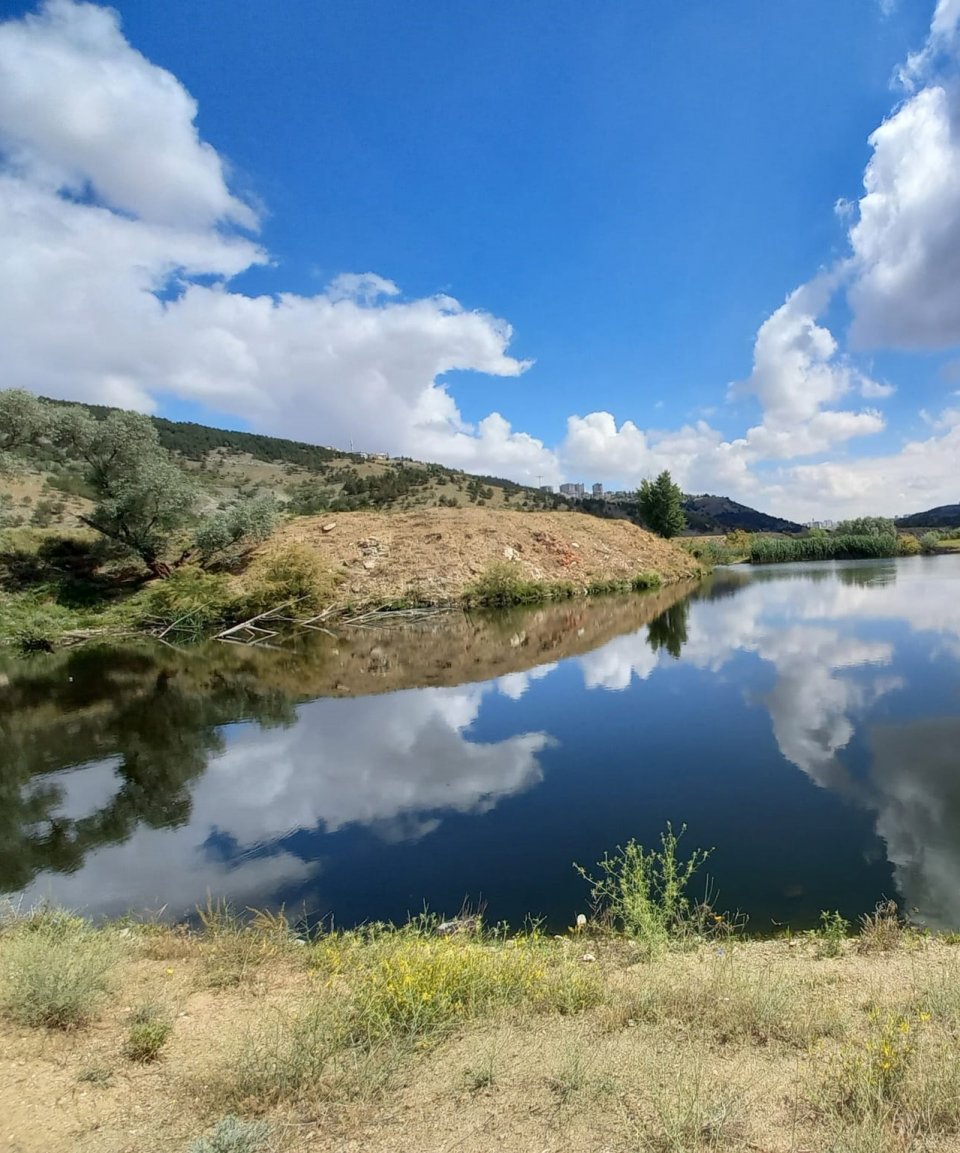
Imrahor River Valley Pondscape, located southeast of Ankara, covers 12 ponds, initially created for flood prevention and water retention. Managed by Ankara Metropolitan Municipality, it offers public access and recreational activities such as walking and picnicking. Over time, rapid urbanization, real estate development, and road constructions have altered the area’s hydrology, reducing natural water flow and threatening biodiversity. The valley’s ponds, once vital for biodiversity, now face pollution from nearby industrial activities, threatening their ecological value. Despite these challenges, the area remains an important urban green space.
This pondscape plays a key role in flood mitigation and water management in Ankara, supporting biodiversity despite urbanization. It provides crucial ecosystem services like habitat provision and water regulation, while offering recreational spaces for the public, benefiting both urban and rural areas.
- Maintenance of existing ponds through bank vegetation management.
- Removal of non-native species and reintroduction of threatened species.
- Tree planting and restoration of grasslands to prevent soil erosion.
- Waste management, including the removal of solid waste and improvement of water quality.
- Disaster Mitigation
- Biodiversity Enhancement
- Human Health
- Water Management
- Developing climate change adaptation; improving risk management and resilience
- Increase infiltration / Water storage
- Reduce drought risk
- Reduce flood risk
- Reduce run-off
- Restoring ecosystems and their functions
- Increase Biodiversity
- Increase quality and quantity of green and blue infrastructures
- Improve water quality
- Increase accessibility to green open spaces
- Increase social interaction
- Provision of health benefits
- Social learning about location & importance of NBS
The success of the Imrahor River Valley pondscape restoration can serve as a model for other urban and semi-urban areas facing similar challenges. The implementation of Nature-based Solutions, such as pond restoration and biodiversity management, can be replicated in other regions to address both environmental and societal needs. The integration of green infrastructure in urban planning, especially in rapidly urbanizing regions, could mitigate the negative impacts of development and provide long-term ecological and societal benefits.
The Imrahor River Valley faces ongoing threats from urbanization, which reduces flood mitigation capacity and degrades water quality, impacting biodiversity. The absence of a robust policy framework and lack of coordinated management among stakeholders exacerbate these issues. Strengthened environmental protections, effective waste management, and limiting further real estate development are crucial. Collaboration between local authorities, environmental organizations, and landowners is essential for the pondscape’s restoration. Securing funding for long-term conservation and integrating nature-based solutions will ensure the pondscape’s sustainability.
Further information
- 3. Good Health and Well-being
- 6. Clean Water and Sanitation
- 11. Sustainable Cities and Communities
- 13. Climate Action
- 14. Life Below Water

